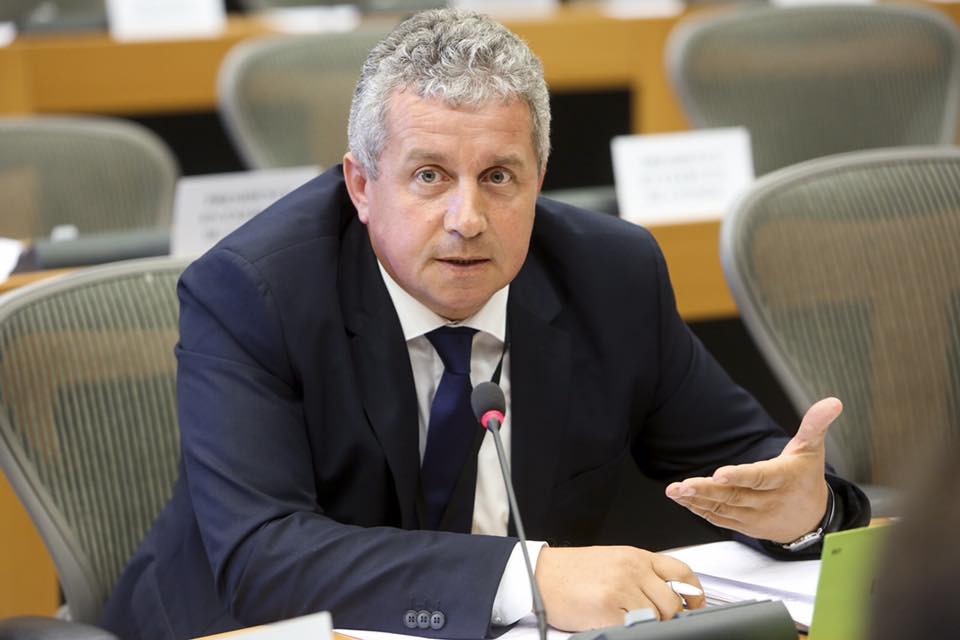Visibility of ESI Funds - MEP Daniel Buda Interview

Mr. Buda, what is the main goal of the report approved by the EP?
The main idea behind this report had its basis in the fact that the Cohesion Policy is currently financed within a budget of over 350 billion euros. However, the positive outcomes are less known by the citizens, and the obvious conclusion was that the means of communication were not exactly efficient most of the times.
Therefore, the own-initiative report seeks to scrutinize actual experiences and work on an increased visibility of the structural and investment funds. The own-initiative report also aims to propose an approach to link Cohesion Policy instruments with local policies, to improve the effectiveness of the decisions at the local level through developing participatory governance as a useful tool to enhance the visibility of ESI Funds.
What do you mean with ‘new ways of advertising the results of cohesion policy investments?
The best form of advertisement is to illustrate the significance and usefulness of the implemented projects. Communication of results was not always a priority for the interested parties. Therefore, communication-related activities, as far as the tangible results are concerned, should continually be updated. Considering that the technical assistance of the EFSI funds does not include a financial package dedicated to communication-related objects, we furthered the issue in hopes of supporting the increase of visibility.
Given the quantity and quality of information transmitted on traditional and modern media, it is no longer enough just to display the Commission’s logo on project description panels. Therefore, we suggested interactive online mediums, developing of software applications and mobile content in a more accessible fashion, aimed towards informing the European citizens about the impact of the cohesion policy investments results. The report considers elaborating of informative campaigns and communication strategies regarding mass-media, which should be updated to the current informational challenges and this should offer more information in a more accessible and attractive manner.
How would you link Cohesion Policy instruments with local policies?
We must keep in mind that the visibility of the cohesion policy, as well as the opportunities of financing, are a responsibility of the local and regional authorities rather than European bodies, since they are the closest to the people interface available, and local authorities benefit from the highest degree of trust from the citizens.
The role of the partnership principle in enhancing the collective commitment and ownership of cohesion policy is significant. Therefore, the link between public authorities, potential beneficiaries, the private sector, civil society, and citizens has to needs strengthening through open dialogue.
How can the impact of communication be increased through social media?
It is necessary to use the power of influence of the social media platforms, the advantages offered by digital progress and the combination of different means of communication available in order to better use them for promoting the current opportunities as well as the results of the ESI funds’ investments. The impact of communication through social media can be increased by using a strategy designed for the digital medium and social platforms aiming at informing the citizens and offering the possibility to express their needs. We must highlight the access to final users through different sets of instruments, such as interactive online media, developing of applications and more accessible mobile content, as well as making sure that the information is adapted age-wise and is available in several languages, where needed.
How would you suggest to involve better the local community in decision making?
On the long run, meeting our established goals is achievable only by involving all our vital partners in the decision making process, by increasing the degree of owning of the implementation of policies. There is a critical need for developing of instruments or animation platforms, considering the actual models of participatory governance, by getting the citizens involved in a participatory process of coming up with the budget. Moreover, the same mechanisms should offer citizens the possibility to prioritize the investments in the areas where they live. By doing so, the citizen will become part of the decision-making process, they will be responsible as far as these investments are concerned, and most definitely, they will make sure of the visibility of the European funds use.
There are local initiatives which involve citizens in the governance act that should also be promoted more intensely: the municipal authority in Gdansk, Poland and the municipality of Cluj-Napoca, Romania, from where I come from, have successfully launched concrete initiatives, pilot engagement projects which involve citizens in the decision-making process at the local level, and their contributions are essential to the budgeting process on the principle of participation.
